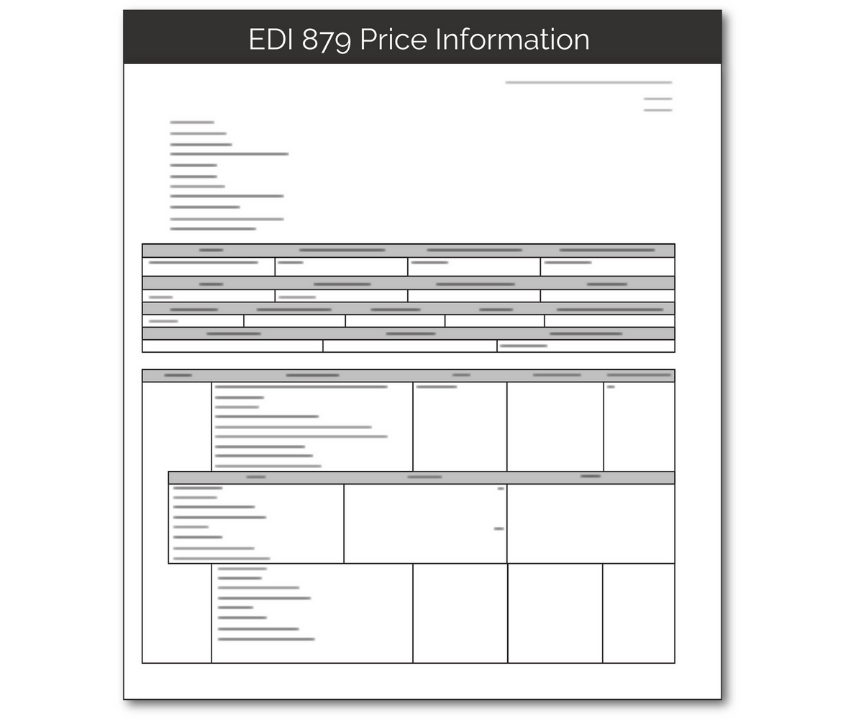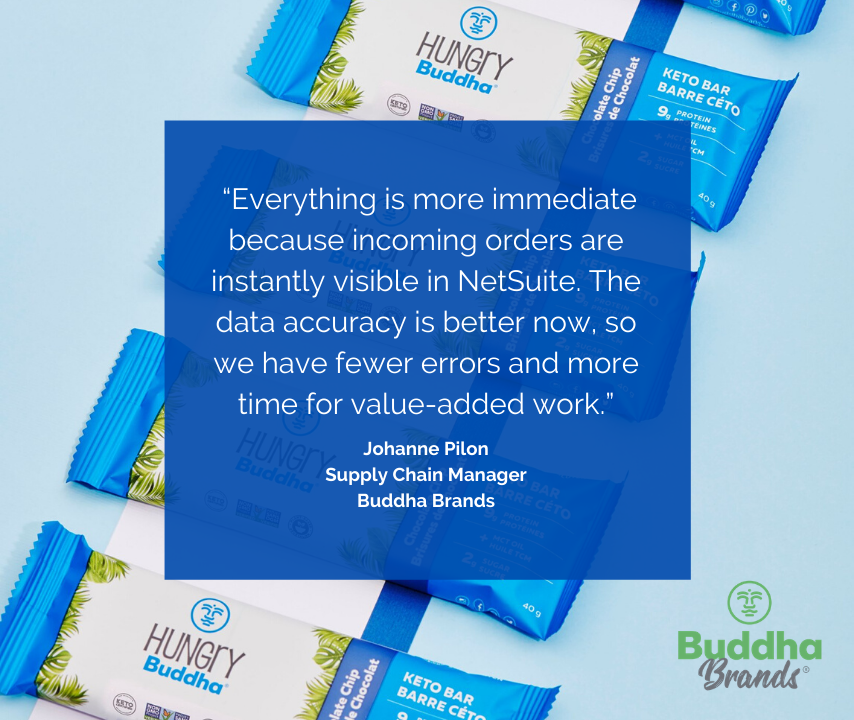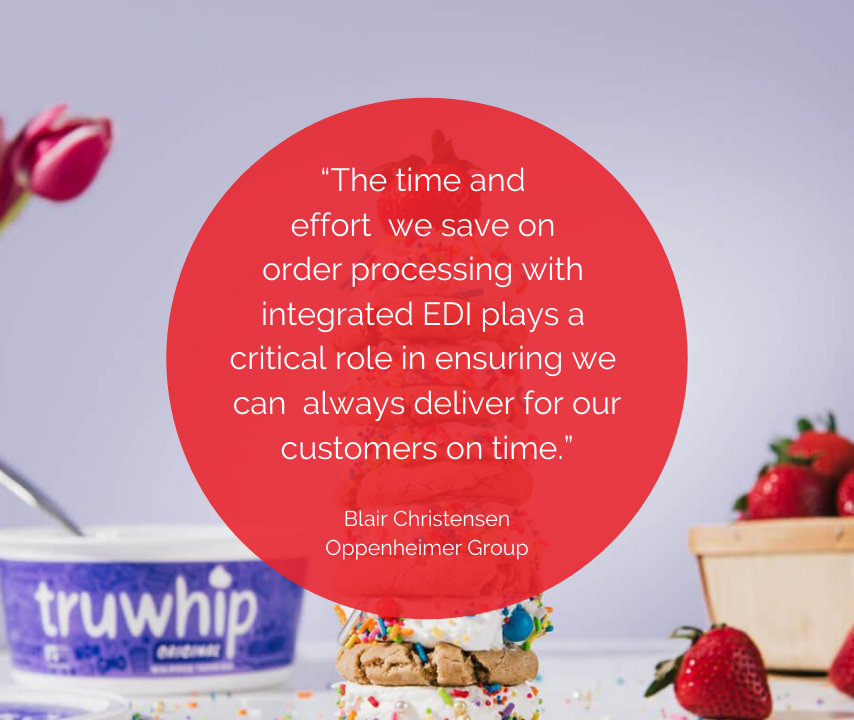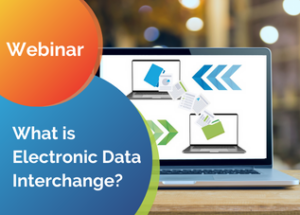EDI 879
Price Information

What is an EDI 879?
EDI 879 is the EDI transaction code associated with an electronic Price Information document. This document is used by vendors to alert retailers or resellers to new product pricing or product price updates.
EDI 879 documents follow the x12 format set by the American National Standards Institute (ANSI), a not-for-profit organization that regulates EDI formats in the U.S.
What are the Essential Components of EDI 879?
EDI 879 documents need to include both product-identifying details, as well as specific pricing information. Elements found on EDI 879 include:
- Vendor information, such as vendor number, address, etc.
- Product identifiers, such as SKU or UPC numbers
- Product price per unit
- Price break information, such as bracket pricing

How do I Use EDI 879?
EDI 879 can be used to transmit a number of details about product pricing. In addition to establishing prices for new products, the document also lets buyers know about pricing changes to existing documents. Pricing Information can include base prices, bracket pricing and geographical pricing areas when applicable.
When a new product is created in the vendor’s ERP or accounting system, that information can be automatically transferred to their EDI system for the creation and distribution of EDI 879 documents. Similarly, EDI 879 can also be triggered when the vendor makes a pricing change to an existing product in their ERP. After receiving EDI 879 and confirming via an EDI 997 Functional Acknowledgement, buyers are then responsible for updating pricing information in their own systems.

EDI 879 only contains pricing information; for all other product details, vendors should use the EDI 888 Item Maintenance transaction. Because these documents are both triggered by new products or product changes, they are often sent concurrently. To update broader product information, vendors generally use an EDI 832 Price/Sales Catalog document.
What are the Benefits of EDI 879?
Having accurate pricing information is vital to both retailers and vendors. From the vendor perspective, disseminating price update information can help keep trading partners up to date, and avoid disagreements on product pricing and invoice payment delays.
For retailers, vendor prices are often used as the base, to which the retailer margin is added to create the customer-facing price of each product. If a retailer has the wrong price information, they could end up losing profits, or overpricing their goods, which can cause consumers to look at other stores for better prices.

Because EDI 879 can be fully automated, it can give retailers and resellers near real-time visibility into product pricing and enable them to quickly update their internal systems to reflect price changes. Using integrated EDI instead of a paper document also helps reduce errors, by pulling price data directly from the vendor’s ERP system to ensure data accuracy.
It’s important to note that EDI 879 also offers a more secure way to transmit pricing data. Because this document can include pricing that differs from one trading partner to another, confidentiality is essential. Many EDI solutions use at-rest or in-transit encryption, along with secure protocols and user authentication, to keep EDI data safe from prying eyes.

